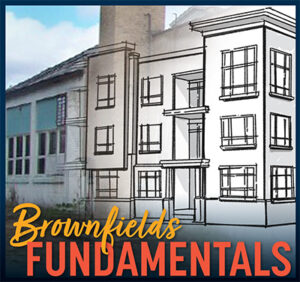 The benefits of cleaning up and redeveloping brownfield properties are significant. Returning underused and unsightly commercial and industrial properties back to productive use protects public health and promotes community vitality.
The benefits of cleaning up and redeveloping brownfield properties are significant. Returning underused and unsightly commercial and industrial properties back to productive use protects public health and promotes community vitality.
State and federal financial assistance for brownfield revitalization is available in many forms for local governments. The Wisconsin Department of Natural Resources (DNR) can help your community put all the pieces together, address environmental contamination and move these projects forward.
Gather Your Team
Once you identify one or more brownfield properties in your community that will likely sit empty for years without local government involvement, contact the DNR to request a Green Team meeting with brownfield specialists. The DNR staff can help your community in many ways, including:
- Identifying property acquisition methods that give liability exemptions to local governments;
- Managing liability concerns throughout the cleanup process;
- Understanding the process of assessing, investigating and cleaning up brownfield properties; and
- Identifying and explaining financial assistance options.
In addition to bringing the right people to the project conversation, a Green Team meeting will help your community understand how to get started and identify potential funding sources that work well together. Local governments can request as many Green Team meetings as needed to fully understand the technical cleanup path to site closure, and an adjacent funding strategy. The DNR understands that brownfield properties are a burden for local governments and wants to help repurpose these properties.
Assess Brownfield Properties With DNR Contractor Service Grants
Environmental assessment, performed by qualified private sector environmental professionals, is typically the first phase of the brownfield property remediation and reuse process. Financial assistance programs that are frequently paired are the Wisconsin Assessment Monies program (WAM), managed by the DNR, and the Site Assessment Grant (SAG) program, offered by the Wisconsin Economic Development Corporation (WEDC).
WAM is a contractor services award program that funds Phase I and Phase II environmental site assessments, up to $35,000. Limited site investigation work may also be funded at some properties. SAG funds environmental assessment and demolition activities.
When applications from local governments are timed right, funding sources can combine to provide broad coverage of environmental assessment needs. The DNR’s WAM award disbursements can also be used to meet WEDC’s SAG financial match requirements.
Clean Up Brownfield Properties With State Loans And Grants
Following site assessment and investigation activities at a property, cleanup work may be needed. With a good plan in place and consistent communication with the DNR, contamination cleanup funding sources can be secured by local governments and lined up to keep the work progressing without delay.
The DNR’s Ready for Reuse revolving loan fund program provides 0% interest-free loan funding for environmental remediation activities. In some situations, partial loan forgiveness is also possible.
The Brownfields Grant Program offered by WEDC can fund site investigation activities, remediation work and subsequent environmental monitoring.
Like the assessment funding programs, the DNR’s Ready for Reuse loans and WEDC’s Brownfields Grants complement each other to provide broad coverage of cleanup needs. They help keep remedial work progressing toward site closure and, when coordinated, can be leveraged to cover match requirements, which minimizes out of pocket expenses for local governments.
Cleaning up and redeveloping a brownfield property takes time, but with Green Team help from the DNR and the support of state financial partners, a successful redevelopment is possible. Many communities have effectively cleaned up and repurposed brownfield properties (see Brownfield Success Stories). The DNR is happy to help you and your community with your cleanup and redevelopment efforts. Request a Green Team meeting and start the conversation today!

 The benefits of cleaning up and redeveloping
The benefits of cleaning up and redeveloping